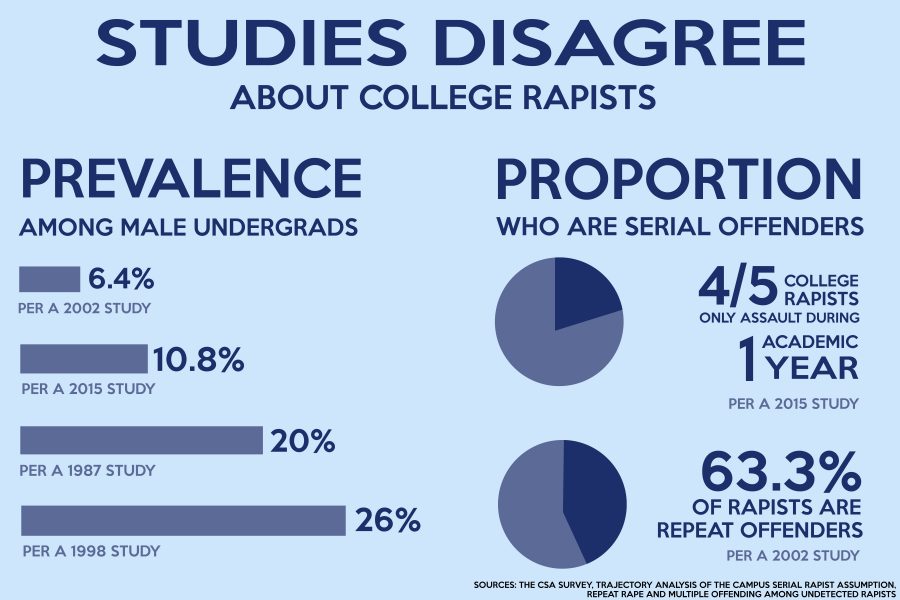After the results of UT’s sexual assault study revealed that 15 percent of female undergraduates had experienced rape, many have sought to understand this staggering figure. However, one aspect of this horrific phenomenon has been largely excluded from these conversations: If the number of rapes at UT is disturbingly high, then so is the number of rapists.
Herein lies the study’s most glaring error. It fails to explore the motivations of sexual violence perpetrators within our community. By neglecting to provide any insight into the minds of assailants, the study leaves us with no concrete path forward. Only by addressing the root cause of rape — rapists — can the University attempt to solve its sexual assault problem.
Conversations about the prevalence of rapists are more difficult to have than conversations about the prevalence of rape. These conversations invoke blame. They force us to recognize that people in our community are committing these crimes, undetected and unpunished.
This is not just a UT problem. Research analyzing the perspective of perpetrators is sparse compared to that examining the perspectives of victims. This can be partially attributed to the massive number of assaults that go unreported and
unresolved. However, this dissonance is also representative of the overwhelming focus we put on victims when addressing sexual assault.
This focus allows us to ignore a central problem with sexual assault: For the most part, men in our community are doing this to women in our community. A minimum of 54 percent of sexual assaults on UT students were perpetrated by fellow students.
Studies examining the thought process of sexual assailants yield remarkably different results. Motivations ranging from entitlement to hatred of women have been used to explain this figure. However, many attribute the striking prevalence of sexual assault to misunderstandings of consent. Perhaps half of all rapists — like half of all victims — fail to understand their actions as rape. Perhaps UT’s problem of sexual assault lies in miscommunication about consent.
Addressing the problem of rape through the lens of male guilt often elicits contentions over its prevalence. Focusing on men when discussing rape makes individuals feel unfairly blamed. They urge that not all men rape, so all men shouldn’t be subject to such discussions. This mentality makes exploring the causes of sexual violence difficult, as it elicits profound discomfort.
Many find comfort in the idea of the “repeat offender.” Imagining that the 15 percent of female undergrads — approximately 3,750 people — were all assaulted by the same handful of horrible people seems comforting because it allows us to imagine that most men on campus are innocent of this. Some research does support this idea. According to several studies, the majority of rapists — 63 percent — are repeat offenders, and the average repeat offender will commit four assaults. However, one study suggests that four out of five rapists will only rape within one academic year.
Data in this realm is disturbingly inconclusive. One study found that 6.4 percent of male undergraduates had committed rape. At UT this means 1,600 men. One study found that nearly 20 percent of male students reported attempted or completed rape — that’s 5,000 Longhorns. Another found that 26 percent of men had used either force or intoxication to obtain sex — that’s 6,500 Longhorns. Even accepting the most conservative of these figures describes the harrowing prevalence of sexual assailants on campus.
The University cannot solve its sexual assault problem without a comprehensive study of the motivations of men who commit sexual violence. Addressing the problem of rape necessitates addressing the prevalence of rapists. When President Gregory Fenves says that “one sexual assault is too many,” he must also mean that one sexual assailant is too many. Not all men commit rape, but some of them do — and the University does its students a disservice when it fails to address the
misdeeds of the few for fear of alienating the many.
Anderson is a Plan II and history freshman from Houston. She is a columnist.





















